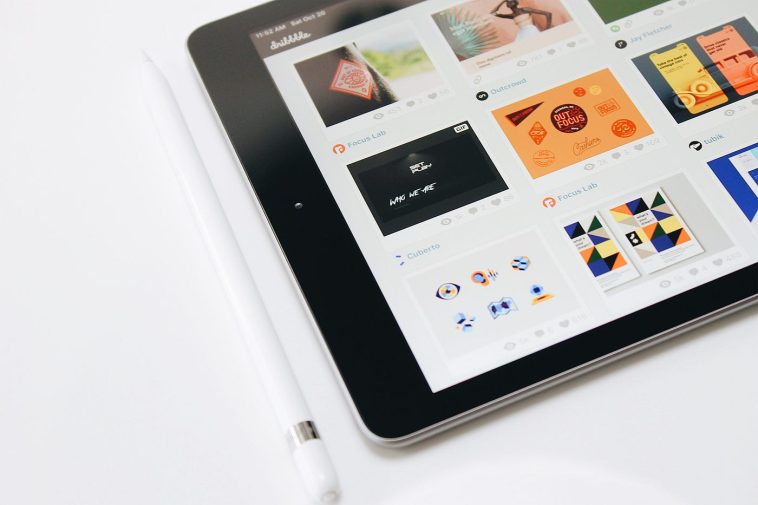Introduction.
Creating digital products is one of the simplest ways to start making money online—especially if you’re new and don’t want to deal with shipping, inventory, or warehouses.
I’ve met people who started with nothing but an idea, made a few tweaks on Canva, uploaded it, and within a few weeks, they were getting their first sales.
What makes digital products even better is that you build them once and sell them over and over. No packing. No customer visits. Just upload and share.
They can be ebooks, templates, guides, stock photos, music, courses—anything you can deliver digitally. And the market is growing fast.
According to Statista, the global e-learning market alone is expected to reach $375 billion by 2026 .
The good news? You don’t need to be an expert or have a fancy website. You just need the right idea, the right tools, and a little guidance. That’s what I’ll walk you through in this post.
What are Digital Products?
Digital products are items you can sell or share online without any physical delivery. Think of things like:
PDFs
Online courses
Templates
Music or sound effects
Digital art
Printables (like planners or coloring pages)
Stock photos or videos
Software tools or mobile apps
These are products people can instantly download, stream, or use on their devices after buying.
They’re great because:
There’s no inventory.
You don’t need shipping.
You keep almost all the profit.
You can reach people anywhere in the world.
Step 1: Choose a Profitable Niche
Don’t try to create something for everyone. The more focused you are, the easier it is to get attention and sales.
Here are a few beginner-friendly niches that sell well:
Health & wellness (meal plans, fitness guides)
Productivity (planners, goal-setting templates)
Finance (budget sheets, savings trackers)
Education (language flashcards, study guides)
Business (social media templates, invoicing tools)
Lifestyle (journals, habit trackers)
Start by asking:
What do I know a little about?
What problems can I help someone solve?
What are people searching for on Google, Etsy, or Gumroad?
You can even use free tools like Google Trends, AnswerThePublic, or Ubersuggest to check what people are interested in.
Step 2: Decide on the Type of Product
Once you know your niche, choose a digital product that fits both your skills and what your audience needs.
Here are a few easy product ideas:
Ebook or guide: Write a short how-to, checklist, or tutorial in Google Docs or Canva.
Printable planner or worksheet: Use Canva to design and export as PDF.
Digital templates: Think resume templates, Instagram posts, Notion dashboards.
Mini course: Use free tools like Teachable or Gumroad to upload videos and PDFs.
Stock photos or digital art: Create or shoot your own and sell on platforms like Creative Market or Etsy.
You don’t need to be a designer. Canva has free templates you can customize and make your own.
Step 3: Create Your Digital Product
Now comes the fun part—building it.
Here’s a basic setup:
Use Canva (free or Pro): Great for ebooks, templates, and printables.
Use Google Docs or Word for ebooks or checklists.
Use Notion to create productivity templates.
Use Loom or Zoom to record course videos.
Use GarageBand, Audacity, or BandLab if you’re creating music or sound effects.
Keep it simple. A 10-page PDF with real value will do better than a 50-page fluff piece.
Tips for beginners:
Add clear instructions or usage tips.
Keep your fonts clean and easy to read.
Use high-quality visuals.
Double-check spelling and formatting.
Save everything in formats people can easily open (PDF, PNG, MP4, etc.).
Step 4: Price It Right
Most beginners ask: “How much should I charge?”
Here’s a general guide:
Simple checklists or planners: $5–$15
Templates or toolkits: $10–$40
Ebooks: $10–$50
Mini courses: $25–$100
Premium bundles or full courses: $100 and up
Start small and raise your price as you get reviews or add value. You can also run discounts when launching to attract your first buyers.
Step 5: Choose Where To Sell It
There are lots of places to sell digital products. Some are easier to use, while others give you more control.
Easy marketplaces (no website needed):
Gumroad: Easy for beginners, takes care of everything.
Etsy: Great for printables, templates, planners.
Payhip: No upfront cost, good for selling ebooks or courses.
Ko-fi: Lets you sell digital downloads and accept donations.
If you want full control:
Create a website with Shopify, WordPress, or Sellfy.
Connect a payment tool like Stripe or PayPal.
I usually suggest starting with Gumroad or Etsy. They’re beginner-friendly and don’t need any tech setup.
Step 6: Promote Your Product
Once your product is live, it won’t sell unless people find it. Promotion is just as important as creation.
Here are free and simple ways to get traffic:
Post on Pinterest: Great for templates and printables.
Share on Instagram or TikTok: Create short, helpful videos showing your product.
Join Facebook groups: Offer value and link to your product when it makes sense.
Use Reddit or Quora: Answer questions in your niche and include links if allowed.
Start a blog or YouTube channel: Create helpful content related to your niche and promote your product in your bio or description.
Consistency is more important than going viral. Post regularly and keep learning what works best.
Step 7: Get Feedback and Improve
The first version won’t be perfect. That’s fine. What matters is getting something out there and learning as you go.
Ask your first customers:
Was it easy to use?
What confused them?
What could be better?
Then make small changes. Add extra pages, improve design, or bundle products. Over time, you’ll build a solid product line people trust.
FAQs
Do I need to register a business first?
Not always. You can start as an individual. But as you grow, it’s a good idea to register a business for legal and tax reasons.
Can I sell digital products without showing my face?
Yes, absolutely. Many sellers use brand names or logos instead of personal profiles.
What if I’m not good at design?
Use templates on Canva or buy ready-made ones on Creative Market. Focus on value, not fancy design.
How do I protect my digital products from being copied?
Add copyright notices. Use PDF passwords if needed. But don’t stress too much—focus on reaching more people.
Can I use AI tools to create digital products?
Yes. AI tools like ChatGPT, Jasper, or Canva’s AI can help generate ideas, content, or graphics. Just make sure the final product is useful and edited by you.
Conclusion
Creating digital products is one of the easiest ways to start making money online, even if you’re a beginner.
You don’t need fancy tech skills, a big budget, or a large following to start. All you need is an idea, a bit of effort, and a way to deliver value to someone else.
Start small. Learn as you go. You’ll be surprised at how quickly things can grow once you get that first sale.
What kind of digital product do you think you could start creating today?





GIPHY App Key not set. Please check settings